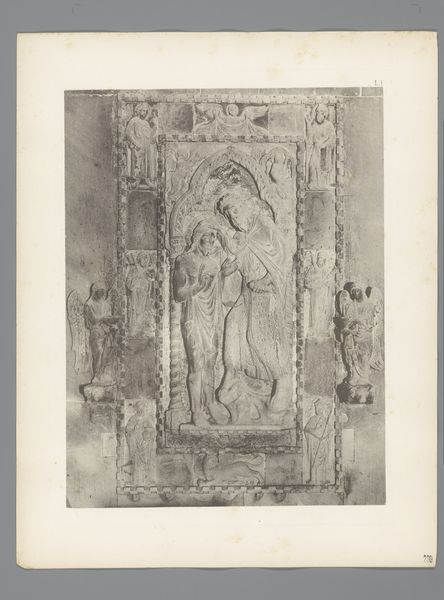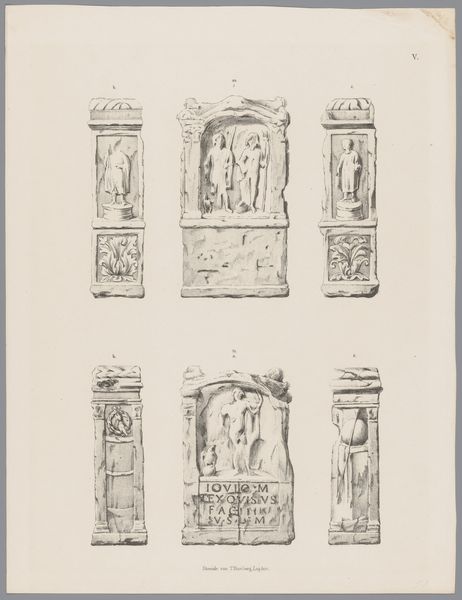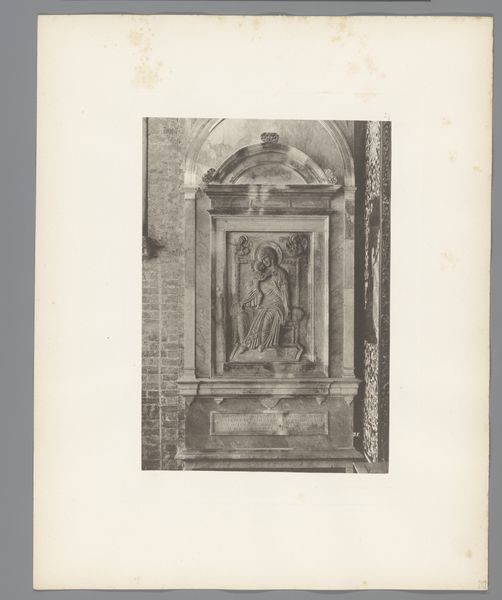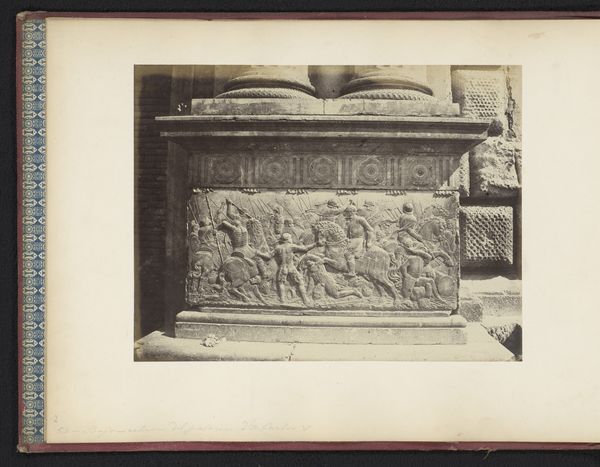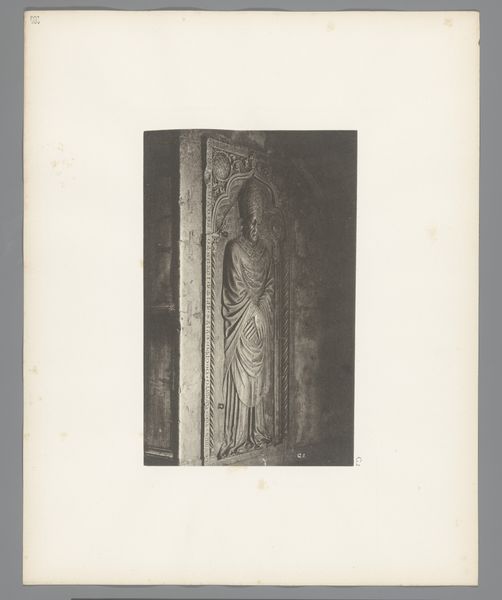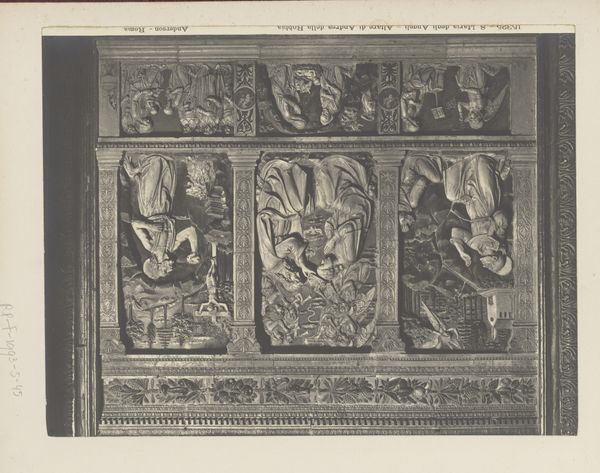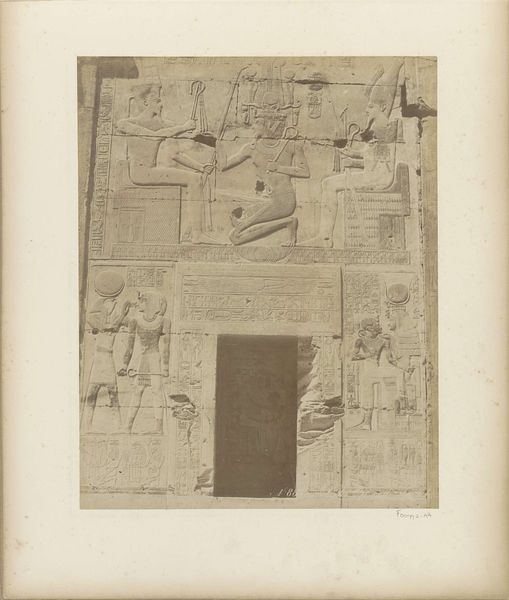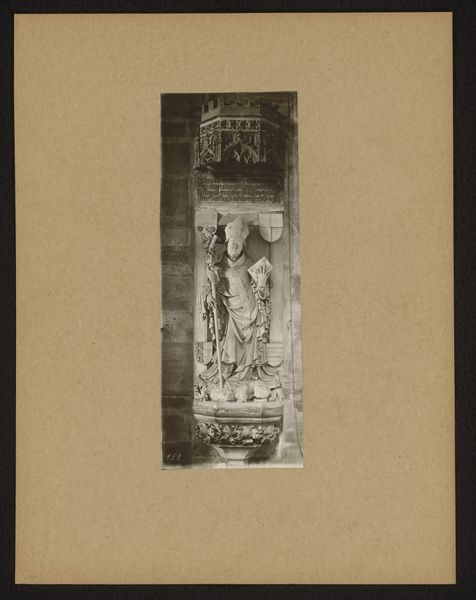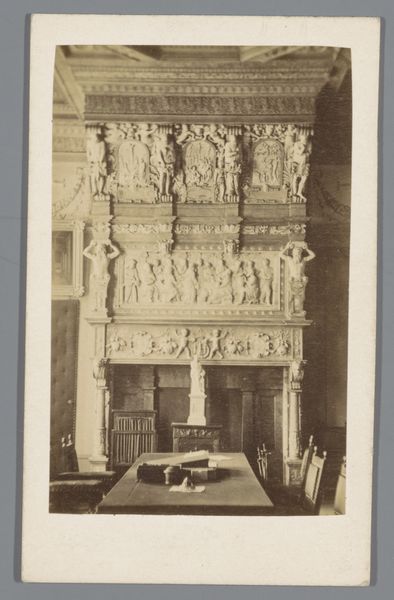
print, photography, sculpture, gelatin-silver-print
#
portrait
#
aged paper
#
homemade paper
#
paper non-digital material
#
pale palette
#
medieval
# print
#
light coloured
#
white palette
#
paper texture
#
photography
#
sculpture
#
folded paper
#
gelatin-silver-print
#
paper medium
#
design on paper
Dimensions: height 394 mm, width 311 mm
Copyright: Rijks Museum: Open Domain
Curator: Before us is Carl Heinrich Jacobi’s "Graftombe in de San Marco in Venetië," a gelatin silver print from before 1885. It depicts a tomb in Venice’s San Marco. Editor: It feels somber. Almost haunting. The lighting is dim, casting long shadows that give it a feeling of age. The craftsmanship of the tomb itself looks amazing, so ornate, all captured on this pale paper. Curator: Absolutely. The choice of a gelatin silver print, particularly on what appears to be aged paper, speaks volumes. It mimics the antiquity of the subject itself, a material nod to the passage of time and the very substance of history embedded within the image. What sort of labor went into creating the tomb versus the labor involved in making this image of it? Editor: Right? You're practically holding history in your hands—both the depicted monument and the print itself as a tangible object, carrying its own lifespan and process. Look at the sculpted panels along the tomb front, all the saints and angels in miniature—like whispers across centuries. Curator: Exactly! Jacobi draws attention to not just the sculptural object, but also to its consumption. By using a process so linked to reproducibility and mass distribution he democratizes the experience of beholding a piece that most people couldn't travel to see. Editor: And thinking of the hands that made the tomb—the sculptors shaping stone—now captured by light, chemicals, and Jacobi's intent. It is all incredibly physical but mediated. I like the angel, and the almost medieval tone; this artwork has real depth! Curator: Indeed. It serves as a reminder that art is not just about aesthetic pleasure but is also fundamentally tied to labor, material, and the broader social fabric. Editor: It certainly offers us a way to think about how objects of devotion become commodities, viewed by a secular audience. A collision of then and now. Curator: Very true. In viewing Jacobi's photograph, and your highlighting of materiality and production, we are really peeling back the layers of meaning and interrogating our own act of consumption, aren’t we? Editor: That´s what it has become for me! Now, seeing the process of photography displayed, along with our positions to consumption, does put our discussion in real perspective. Thank you!
Comments
No comments
Be the first to comment and join the conversation on the ultimate creative platform.


